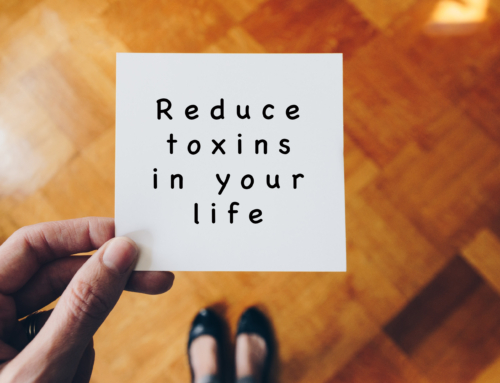Most individuals at one time or another have encountered an unfamiliar word and reached for Webster’s Dictionary, but did you know that Dr. Noah Webster was more than an American lexicographer, (one who writes and edits dictionaries) he was also a textbook pioneer, political writer, editor, and prolific author who was called the “Father of American Scholarship and Education. ” In 1828 Webster defined Education as, “…the bringing up of a child, instruction; formation of manners. To comprehends all series of instruction and discipline which is intended to enlighten the understanding, correct the temper, and form the manners and habits of youth, and fit them for usefulness in their future stations. To give children a good education in manners, arts, science, and values; this is an immense responsibility that rests on parents and guardians (teachers).”
Webster recognized that the significant elements needed to rear a child included comprehension, enlightened understanding, correction to the temper, habit development of youth and preparation for the future. These timeless components proved to be extremely beneficial in preparing the 20th Century students for their future. But how do educational practitioners of the 21st Century prepare to address this galactic feat? How do we prepare our students with these disciplines to produce individuals that effect social equality, who have mental and physical well-being with discipline, and who have problem solving skills and authenticity?
Research indicates that educators are well versed, even more highly qualified today through educational standards and accountability measures. They are indoctrinated in subject matter, assessment strategies, and professional development. No other profession feels the weight and responsibility of massively producing groups of children, ranging from elementary, middle, and high-school to young adults; like superintendents, administrators and teachers. Yet, we are finding that teachers have not been provided pertinent information about the most essential tool, which is to comprehend the major source of learning the most complex organ in the body, the brain. The brain is made up of a complex network of billions of nerve cells called neurons, and acts as a body’s “Command Central” (National Institute of Drug Abuse Publication, 2018).
Teachers need to be taught the complexity of how the brain operates, why some individuals process information quickly and why some are easily defeated and frustrated with learning. The brain is the most incredible organ, home to more than a hundred billion neurons. Today major universities such as Harvard’s Mind Brain Education Institution, Vanderbilt University Educational Brain Institution, and Columbia University, are incorporating the disciplines of neuroscience (a scientific discipline that studies nerve cells or the nervous system), and educational programs. Norman Doidge, (Doidge, 2018) indicates that we can actually change the landscape of the mind, reduce stress levels and implement focus attention practices to create a better learning environment. In doing so we can train ourselves, and those we teach to understand and overcome areas that impede our true brilliance. This takes times, but it works!
The Most Essential Components of Education
According to Dr. Lori Desautel, (Desautel, 2012) neural anatomy has become one of the most essential components of education. The main ingredients of brain development today are positive experiences, and feelings of attachment to make connections, along with sleep, water and being understood. Twenty percent of students across the United States are reported to have chronic anxiety today, averaging up to one-third of the education population. Teachers are also experiencing equivalent amounts of stress, making the learning environment draining and explosive at times.
Understanding the biology of the brain helps educators and parents train students about why they are shutting down, lashing out, experiencing power struggles, operating with anxiety or aren’t achieving goals. A student learning about the basal ganglia (a structure that contains a dense cluster of nerve cells), said to me, now I know why I don’t want to work and feel so frustrated, “I’m not going to let this stop me from learning any more, I’m taking control of my thoughts and feelings!” This is the power of giving students tools and language to express their feelings, it empowers them and puts the responsibility back on them to choose and succeed.
In addition to understanding the biology of the brain, Dr. Ratey’s (Ratey, 2013) research shows that we all need more movement moments, that daily exercise increases oxygen which flows to the brain throughout the day, creating greater focus and less stress. During the fight or flight moment, with anger, frustration and stress, teachers and parents would benefit to know that the frontal lobe is shutting down and the student or individual is no longer engaged.
It was once taught that the frontal lobe completed the developmental process in the early twenties. New research shows that it develops more completely in the late twenties and early thirties. We now know that this seat of decision making in the frontal lobe, where critical planning, creativity and personal development takes more time. Therefore, we must give our students tools and boundaries, that train and model respect, honor, perseverance and value for life.
Action Steps
One method used by Dr. Desautel and her colleagues to train teachers and parents, to relieve stress related to conflicts is deep breathing. Both the teacher and parent are trained to pause, stop and breathe before disciplining. Have the student also do the same, pause, stop and take three deep breaths. The teacher and parent can also ask: What do you need? How can I help you? How can we solve this situation together? Sometimes the student or individual doesn’t know and won’t respond, but they will appreciate that they are being seen and felt.
Dr. Jill Bolte Taylor’s (Bolte Taylor, 2012) research shows that we have ninety seconds for the body to release anger, after that, the person chooses to keep that level of frustration or cool down and think of a new reaction. The amygdala, the two almond shaped nuclei located deep within the brain’s temporal lobes, stores and processes emotions. For some students, it is on high alert, when in a hostile environment, such as taking an exam or when learning is interrupted by various internal and external factors. The amygdala stirs up the scene that produces negative emotions, even terror. It may remind the person of past failures, or the need to protect oneself making it impossible to interpret the situation or think rationally. The good news is that a person can be trained to reset the mind, to choose to create a new thought. As the thought is practiced and processed over a twenty-one day period a new habit it birthed, although it is not fully developed until three sets of twenty-ones days are implemented.
Dr. Desautel (Desautel, 2012) also utilizes more tangible methods for teachers and parents to enhance the learning environment, creating an “amygdala reset station”. This reset station can be a simple desk or location in a home or classroom with water, headphones and music, almonds-trail mix, nice warm scents, hand lotions, a stuffed animal or soft fabric. Of course these items are all optional, they should stimulate and relax the senses and rejuvenate the mind while being a safe place for students, parents and teachers to refocus.
The bottom line is that neuroscience, neuroplasticity, and new classroom-home management skills are present and here to stay. These interventions are needed for maturation and preparing our children and all individuals to discover and refine their intelligence. Let’s renew our commitment, believing that each one should be provided the opportunity to live out the highest expression of their authentic self. You are an amazing educator, I’ve been in the classroom and experienced firsthand your passion, lesson plans and instructional practices. Let’s work smarter than we did last year to educate ourselves, our children and communities to a higher degree, and grow in our understanding of how the mind-brain works for greater successes.
For more neuroplastic exercises and information to build better intercommunication to prepare the mind to learn, email Dr. Kinchlow at Bridges2k@gmail.com.
References and Recommended Reading:
Bolte Taylor, J. (2006) My Stroke of Insight October 2006
Desautel, L. (2012) How May I Serve You? Revelations in Education Paperback – February 7, 2012
Doidge, N. (2007) The Brain That Changes Itself: Stories of Personal Triumph from the Frontiers of Brain Science Dec 18, 2007
National Institute of Drug Abuse Publication (2018)
Ratey, J. (2013) Exercise and The Brain November 2013 Video
Sousa,D. & Tomlinson, C (2018) Differentiation and the Brain: How Neuroscience Supports the Learner-Friendly Classroom, Second Edition
Article Written by: Dawn Lawrence, Ed.D. and Heather Kinchlow Ed.D.







